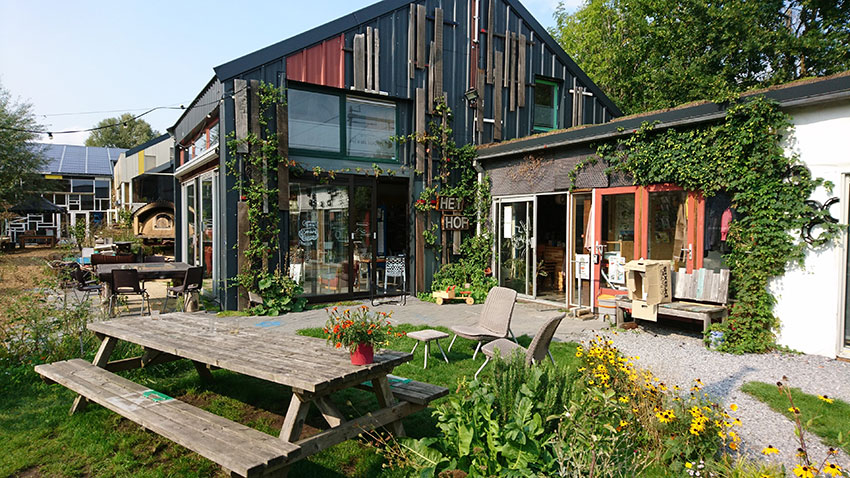An abandoned industrial district in the heart of Utrecht, the Netherlands, is being transformed by and for creative circular entrepreneurs into a thriving hub for businesses. They are using construction principles of sustainability, reusability and circularity. Empty factory halls have been upcycled into creative workplaces and monumental buildings converted into event spaces, bringing back life and value to an area that had been in decay for decades and creating hundreds of job opportunities in the process.
- 02 January 2021
Werkspoorkwartier shows how the principles of circularity can be used to revitalise industrial districts.
The transformation of the Werkspoorkwartier demonstrates how such brownfield sites can still be of value by transforming them into modern, attractive and sustainable areas in a circular economy. As a result, the project has been recognised internationally as an important example of the circular redevelopment of urban industrial areas.
To date, over 150 entrepreneurs have established businesses onsite, which has created job opportunities for people living in the adjacent residential areas and boosted the region’s competitiveness.
From industrial past to circular future
The district used to be an important industrial hub. The historic Werkspoor steel factory employed thousands of people in the 20th century. Although the site had been abandoned for decades, the original factory halls and buildings were left standing. Instead of demolishing the original buildings, several were refurbished with the help of EU funds and using as much of the existing building materials and bio-based materials as possible.
One of these buildings is the factory’s original railcar production line. The building now houses the Werkspoorfabriek, a community of 50 innovative, creative and circular companies. While the original industrial character of the 175 m-long building was preserved, the interior space was redesigned to attract companies of all kinds and sizes. The open second and third floors have a flexible, modular construction system of wood and glass. These elements can be adapted to suit each tenant’s needs, reused and replaced.
In total, over 10 km2 of old industrial terrain has been transformed into new working space. A 4 km2 area of public space has been created, showcasing the original factory halls which were renovated and converted into leisure and entertainment spaces.
By 2021, a new image and sound centre will open its doors to house the annual national film festival and the renowned art-movie theatre ‘t Hoogt. Plans are in the making to transform the old harbour into a zone for restaurants and terraces.
Circular case-studies
One cooperative that has made the Werkspoorkwartier its home is Het Hof van Cartesius, a circularly built green workplace for creative and sustainable entrepreneurs. Instead of simply renting out its available office space, Het Hof decided on an arrangement where its tenants are joint-owners who can build their own workspace around a public, climate-adaptive central garden.
Het Hof generates energy from solar panels and collects rain water. Today, it consists of 60 creative, sustainable and industrial entrepreneurs, each with their own individual focus, but with a collective set of circular principles.
For instance, Professor Loep is a creative workspace that teaches children to make art using waste materials. Another company that joined is called Buurman Utrecht (Neighbour Utrecht) – a reseller of used building materials and organiser of upcycled wood and carpentry workshops onsite.
The Werkspoorkwartier project is coordinated by the Utrecht Sustainability Institute, in collaboration with companies from the district itself, research institutes and circular specialists. The Utrecht University of Applied Science uses the district as a living lab to develop models of circular buildings and area redevelopments that future circular projects, both in the Netherlands and abroad, can draw inspiration from.
In 2018, the Werkspoorkwartier was awarded ‘best circular business district’ of the Netherlands in the ABN-AMRO competition.
Total investment and EU funding
Total investment for the project “Werkspoorkwartier: creative circular manufacturing” is EUR 2 841 392, with the EU’s European Regional Development Fund contributing EUR 1 247 107 through the West Netherlands Operational Programme for the 2014-2020 programming period. The investment falls under the priority “Support for physical, economic and social regeneration of deprived communities” .

